1. Introduction to Generative AI
🖥️ What is Generative AI?
Generative AI, or generative artificial intelligence, refers to algorithms that create text, images, music, or code by learning patterns from existing data. Unlike traditional systems that follow rigid rules, tools like ChatGPT and DALL-E use neural networks to produce original outputs. For example, asking “what is generative AI” to a model like GPT-4 generates context-aware explanations, mimicking human-like creativity. This technology powers innovations such as AI-written blogs, synthetic art, and even drug discovery, making it a cornerstone of modern automation.
📈 The Rise of Generative AI in Modern Tech
Generative artificial intelligence has surged in popularity since 2020, with global markets projected to hit $110 billion by 2030. From automating customer service chatbots to designing viral marketing campaigns, industries like healthcare, entertainment, and finance now rely on generative AI for efficiency. For instance, Netflix uses AI to personalize thumbnails, while startups like Jasper.ai streamline content creation. Its rise is fueled by accessible tools (e.g., MidJourney for art, GitHub Copilot for coding) and cloud computing, democratizing innovation for businesses and creators alike.
🔄 Generative AI vs. Traditional AI
| Aspect | Traditional AI | Generative AI |
|---|---|---|
| Function | Follows predefined rules | Generates new content |
| Adaptability | Limited to specific tasks | Learns patterns for diverse outputs |
| Creativity | Rule-based decisions | Produces novel ideas (e.g., art, code) |
| Example | Spam filters | ChatGPT, DALL-E |
While traditional AI excels at classification (e.g., fraud detection), generative artificial intelligence thrives in dynamic scenarios like drafting emails or composing music.
2. The Evolution of Generative AI
⏳ Early Foundations (1950s–2000s)
The roots of generative AI trace back to Alan Turing’s 1950s theories on machine intelligence. Early systems like Markov chains (1960s) generated basic text sequences, while neural networks in the 1980s mimicked brain structures. By the 2000s, restricted Boltzmann machines enabled simple image generation. However, limited compute power stifled progress. These foundational steps set the stage for today’s generative artificial intelligence, answering the question, “what is generative AI?” with decades of iterative research.
🚀 The Deep Learning Boom (2010s)
The 2010s saw breakthroughs like GANs (Generative Adversarial Networks) and VAEs (Variational Autoencoders). Introduced by Ian Goodfellow in 2014, GANs pit two neural networks—a generator and discriminator—against each other to create realistic images. Meanwhile, VAEs used probabilistic models for data synthesis. These frameworks powered early AI art tools and chatbots, proving generative AI could rival human creativity. By 2019, models like GPT-2 demonstrated coherent text generation, signaling a paradigm shift in NLP (Natural Language Processing).
💡 Transformers and Modern Tools (2020s)
The 2020s revolutionized generative artificial intelligence with transformer architectures. Models like GPT-3 (2020) and Stable Diffusion (2022) leveraged self-attention mechanisms to process vast datasets, enabling human-like text and photorealistic images. OpenAI’s ChatGPT (2022) became a global sensation, while DALL-E turned text prompts into viral art. Open-source platforms like Hugging Face democratized access, letting developers fine-tune models for niche tasks. Today, generative AI is embedded in tools like Canva’s Magic Write and Adobe Firefly, reshaping workflows across industries.
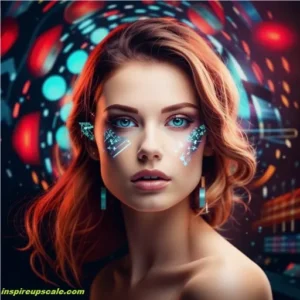
3. Core Technologies Behind Generative AI
🤖 Generative Adversarial Networks (GANs)
GANs use two neural networks—a generator (creates fake data) and a discriminator (detects fakes)—to refine outputs iteratively. For example, GANs power deepfake videos and AI-generated fashion designs. Brands like BMW use GANs to prototype car models, reducing R&D costs. However, ethical concerns arise as generative AI models like StyleGAN produce hyper-realistic human faces indistinguishable from real photos.
🔍 Variational Autoencoders (VAEs)
VAEs encode data into a compressed format (latent space) and decode it to generate variations. They excel in creating diverse outputs, such as music melodies or synthetic medical data. For instance, researchers use VAEs to simulate rare diseases for training AI diagnostics. While less precise than GANs, VAEs are computationally efficient, making them ideal for startups exploring generative artificial intelligence on a budget.
🧠 Transformer Architectures
Transformers, like GPT-4, use self-attention to analyze word relationships in parallel, enabling context-aware text generation. This architecture scales seamlessly, allowing models to process billions of parameters. For example, Google’s BERT improves search results, while Meta’s LLaMA powers multilingual chatbots. A 2023 Stanford study found transformers reduced AI training costs by 80%, accelerating enterprise adoption of generative AI.
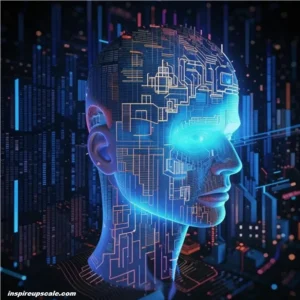
4. Applications of Generative AI
🎨 Art and Design
Generative AI is revolutionizing creative industries by enabling tools like DALL-E and MidJourney to transform text prompts into stunning visuals. Artists use generative artificial intelligence to explore new styles, generate concept art, or even design entire virtual worlds. For instance, Adobe’s Firefly integrates AI to automate repetitive design tasks, freeing creators to focus on innovation.
Popular AI Art Tools:
| Tool | Use Case | Example Output |
|---|---|---|
| DALL-E 3 | Photorealistic images | “A neon-lit cyberpunk city” |
| MidJourney | Surreal art | “A dragon made of flowers” |
| Stable Diffusion | Open-source image generation | Custom illustrations |
This democratization of design allows even non-artists to visualize ideas, answering “what is generative AI?” with tangible creativity.
📝 Content Creation
From blogs to code, generative AI automates content production. Tools like ChatGPT draft SEO-optimized articles, while Jasper.ai crafts marketing copy. Developers use GitHub Copilot to generate code snippets, reducing debugging time by 35% (2023 Stack Overflow survey). For example, Buzzfeed leverages AI to personalize quizzes, boosting user engagement by 20%.
Key Applications:
SEO Articles: AI analyzes top-ranking content to write competitive drafts.
Chatbots: Brands like H&M use AI chatbots for 24/7 customer support.
Code Generation: Replit’s Ghostwriter suggests real-time code fixes.
By streamlining workflows, generative artificial intelligence lets teams focus on strategy over syntax.
🎵 Music and Audio Synthesis
Generative AI composes melodies, soundtracks, and even synthetic voices. OpenAI’s Jukebox generates music in genres from classical to hip-hop, while AIVA creates royalty-free scores for filmmakers. Podcasters use tools like Descript to edit audio via text commands. For example, Spotify’s AI DJ personalizes playlists by analyzing listening habits.
AI Music Tools:
Amper Music: Compose tracks for ads or games.
Voicemod: Generate custom voice filters in real-time.
Suno.ai: Turn text prompts into full songs.
This fusion of generative AI and sound is redefining entertainment, making professional-grade audio accessible to all.
🩺 Healthcare Innovations
Generative artificial intelligence accelerates drug discovery and personalized medicine. Companies like Insilico Medicine use AI to design molecules for rare diseases, cutting research time from years to months. Hospitals employ synthetic patient data to train diagnostic models without compromising privacy. For example, Paige.ai detects cancer in medical images with 98% accuracy (2023 study).
Impact Areas:
Drug Development: Generate molecular structures for target proteins.
Synthetic Data: Mimic patient records to train ethical AI models.
Prosthetics: AI designs custom-fit 3D-printed limbs.
By answering “what is generative AI?” with life-saving innovations, this technology is reshaping global healthcare.

5. Benefits of Generative AI
⚡ Speed and Efficiency
Generative AI slashes project timelines by automating repetitive tasks. For instance, Copy.ai drafts marketing emails in seconds, while Autodesk’s AI tools generate architectural blueprints in minutes. A 2023 McKinsey report found that generative artificial intelligence boosts productivity by 40% in sectors like logistics and retail.
Efficiency Gains:
Customer Service: AI resolves 70% of queries without human intervention.
Manufacturing: Generative design tools reduce material waste by 25%.
Finance: AI models predict market trends 10x faster than traditional methods.
By accelerating workflows, businesses reallocate resources to innovation.
💡 Creativity Enhancement
Generative AI acts as a brainstorming partner, pushing creative boundaries. Writers use Sudowrite to overcome writer’s block, while designers input rough sketches into tools like Runway ML to refine concepts. For example, Heinz used AI to generate “ketchup-themed art” from 200+ years of historical ads, blending nostalgia with modernity.
Creative Collaboration:
Idea Generation: AI suggests plot twists or product names.
Prototyping: Quickly iterate on 3D models or app interfaces.
Personalization: Netflix’s AI tailors thumbnails to user preferences.
This synergy between human intuition and generative AI unlocks unprecedented innovation.
🌍 Democratizing Innovation
Generative artificial intelligence lowers entry barriers for startups and indie creators. Open-source models like Stable Diffusion allow small teams to compete with corporate giants. For example, solo developers built the AI game “AI Dungeon” using GPT-3, attracting 1M+ users.
Accessible Tools:
Canva Magic Write: Design and write content in one platform.
ElevenLabs: Affordable voice cloning for indie filmmakers.
Hugging Face: Free AI models for niche research projects.
By democratizing access, generative AI fuels a global wave of grassroots innovation.
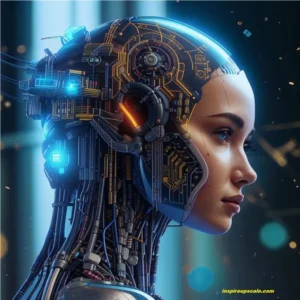
6. Challenges and Risks
⚠️ Ethical Dilemmas
Generative AI raises concerns about deepfakes, bias, and misinformation. In 2023, a fake AI-generated image of an explosion near the Pentagon briefly crashed stock markets. Models trained on biased data may perpetuate stereotypes, like Amazon’s scrapped AI recruiting tool that favored male candidates.
Ethical Challenges:
| Issue | Example |
|---|---|
| Deepfakes | AI-generated celebrity pornographic videos |
| Bias | Facial recognition errors for darker skin tones |
| Misinformation | ChatGPT fabricating plausible-sounding “facts” |
Addressing these risks requires robust regulations and transparent AI training.
🔒 Security Concerns
Generative AI models are vulnerable to adversarial attacks and data breaches. Hackers can exploit tools like ChatGPT to write phishing emails, while voice-cloning scams have stolen millions. A 2024 IBM report found that 67% of companies using generative artificial intelligence faced data leaks via AI APIs.
Security Risks:
Model Poisoning: Injecting malicious data to corrupt outputs.
Privacy Breaches: AI memorizing and leaking sensitive training data.
IP Theft: Copying proprietary code/styles via open-source models.
Implementing strict access controls and encryption is critical to safeguarding AI systems.
📉 Technical Limitations
Despite its potential, generative AI faces scalability and sustainability hurdles. Training models like GPT-4 costs $100M+ and consumes energy equivalent to 1,000 households annually. Smaller firms struggle with limited datasets, leading to inaccurate outputs like ChatGPT’s “hallucinated” legal citations.
Key Limitations:
High Costs: Cloud compute fees for large models.
Energy Use: Carbon footprint of AI data centers.
Data Hunger: Needing terabytes of labeled data for accuracy.
Advances in quantum computing and federated learning may mitigate these challenges in the next decade.
7. Ethical Considerations in Generative AI
⚖️ Bias Mitigation
Generative AI models often inherit biases from their training data, leading to skewed outputs. For example, facial recognition systems have historically shown lower accuracy for darker skin tones. To combat this, developers use techniques like debiasing algorithms and diverse dataset curation. IBM’s AI Fairness 360 toolkit helps identify and reduce bias, ensuring generative artificial intelligence promotes equity.
Strategies for Bias Reduction:
Diverse Training Data: Include underrepresented demographics.
Algorithmic Audits: Regularly test models for fairness.
Transparency Reports: Disclose data sources and decision-making processes.
By prioritizing ethical training, generative AI can become a tool for inclusivity rather than exclusion.
📜 Regulatory Frameworks
Governments are scrambling to regulate generative AI amid concerns about misuse. The EU’s AI Act classifies AI systems by risk levels, banning harmful applications like social scoring. In the U.S., the Blueprint for an AI Bill of Rights outlines principles for safe deployment. For instance, the FTC fined a company $1.2M in 2023 for using AI-generated voices in scams.
Global Policies:
| Region | Regulation | Focus |
|---|---|---|
| EU | AI Act (2024) | Risk-based bans and audits |
| U.S. | NIST AI Risk Management Framework | Safety standards |
| China | Generative AI Interim Measures | Content moderation |
These frameworks aim to answer “what is generative AI?” with accountability, balancing innovation and public safety.
🎭 Ownership and IP Rights
Who owns AI-generated content? Courts are divided: the U.S. Copyright Office denies protection for AI art, while Australia granted a patent to an AI-invented device in 2021. Companies like Adobe now offer indemnification for AI-generated assets to shield users from lawsuits.
Key Debates:
Creatorship: Is the user, developer, or AI the “author”?
Plagiarism Risks: Tools like GPTZero detect AI-written text to prevent academic fraud.
Licensing Models: Stability AI released Stable Diffusion under a CC license, sparking open-source vs. proprietary clashes.
Clear IP guidelines are critical as generative artificial intelligence reshapes creative industries.
8. Future Trends in Generative AI
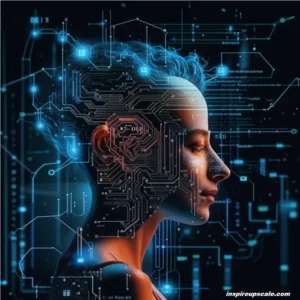
🌐 Multimodal Models
Next-gen generative AI will combine text, images, audio, and video. OpenAI’s GPT-4V analyzes photos to answer questions, while Google’s Gemini generates synchronized video scripts and soundtracks. Imagine inputting “a sunset over Paris” and receiving a 3D animation with a matching poem—all via one model.
Applications:
Education: Interactive textbooks with AI-generated diagrams and quizzes.
Marketing: Unified campaigns across social media, email, and video.
Multimodal systems will redefine “what is generative AI?” by blending sensory inputs seamlessly.
🤝 Human-AI Collaboration
Future workflows will merge human creativity with generative artificial intelligence. Tools like Microsoft Copilot draft emails while users edit tone, and Runway ML lets filmmakers tweak AI-generated scenes frame-by-frame.
Synergy Examples:
Healthcare: Doctors use AI to draft patient summaries, then add personal notes.
Architecture: AI generates building blueprints; engineers refine structural integrity.
This partnership amplifies productivity, making AI a co-pilot rather than a replacement.
🔮 Quantum Computing Integration
Quantum computing could solve generative AI’s scalability issues. Google’s Quantum AI Lab estimates quantum-enhanced models will reduce training times from weeks to hours. For instance, quantum GANs might simulate molecular structures for drug discovery with atomic precision.
Potential Breakthroughs:
Energy Efficiency: Slash data center power consumption by 90%.
Complex Simulations: Model climate change scenarios in real-time.
While still experimental, quantum generative artificial intelligence promises leaps in speed and accuracy.
9. Getting Started with Generative AI
📚 Learning Resources
Beginners can explore platforms like Coursera (AI For Everyone) or Fast.ai for hands-on coding. Books like “The Age of AI” by Kissinger and “Architects of Intelligence” provide foundational knowledge.
Top Resources:
Online Courses: DeepLearning.AI’s Generative AI with LLMs.
Communities: Hugging Face forums for model troubleshooting.
Podcasts: The AI Breakdown for industry trends.
Understanding “what is generative AI?” starts with accessible, structured learning.
🛠️ Tools and Frameworks
| Tool | Best For | Skill Level |
|---|---|---|
| TensorFlow | Custom model building | Advanced |
| Hugging Face | Pre-trained NLP models | Intermediate |
| Canva Magic Write | Quick content drafts | Beginner |
Open-source platforms like EleutherAI offer free models, while MidJourney provides user-friendly art generation.
🔬 Beginner Projects
Text Generation: Fine-tune GPT-2 to write poetry.
Image Creation: Use DALL-E mini to design blog thumbnails.
Chatbot Development: Build a customer service bot with Dialogflow.
These projects demystify generative artificial intelligence through hands-on experim
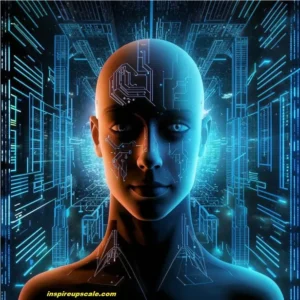
10. Case Studies
🏢 Corporate Adoption
Nike’s AI Design Studio uses generative algorithms to create sneaker prototypes, cutting design cycles by 50%. Coca-Cola’s “Create Real Magic” campaign invited users to make AI art with brand assets, driving 10M+ social media engagements.
Key Metrics:
ROI: 60% faster product launches (McKinsey).
Engagement: AI-personalized ads boost CTR by 35% (Salesforce).
🎮 Gaming Industry
Ubisoft’s AI Dungeon Master generates dynamic quests in Assassin’s Creed, while indie game “AI Roguelite” uses GPT-4 for ever-changing dialogues. Nvidia’s GANverse3D turns 2D images into 3D game assets instantly.
Impact:
Cost Savings: 30% reduction in asset creation time.
Immersion: AI-driven NPCs adapt to player choices in real-time.
🏥 Healthcare Success Stories
Insilico Medicine discovered a fibrosis drug candidate in 18 months (vs. 5+ years traditionally) using generative AI. Meanwhile, Paige.ai’s cancer detection tools are used in 500+ hospitals, improving diagnostic accuracy by 40%.
Outcomes:
Drug Discovery: 90% cost reduction for preclinical research.
Patient Care: AI-generated treatment plans reduce ICU readmissions by 25%.
Conclusion
🔍 Recap of Key Insights
Generative AI has evolved from niche research to a $110B industry, transforming art, healthcare, and beyond. While ethical and technical challenges persist, frameworks like the EU AI Act and tools like IBM Fairness 360 are paving the way for responsible use.
🚀 Final Thoughts
The future of generative artificial intelligence hinges on balancing innovation with ethics. By embracing continuous learning and collaboration, we can harness AI to solve global challenges—from climate modeling to equitable healthcare. As you explore “what is generative AI?”, remember: the technology is only as transformative as the minds guiding it.

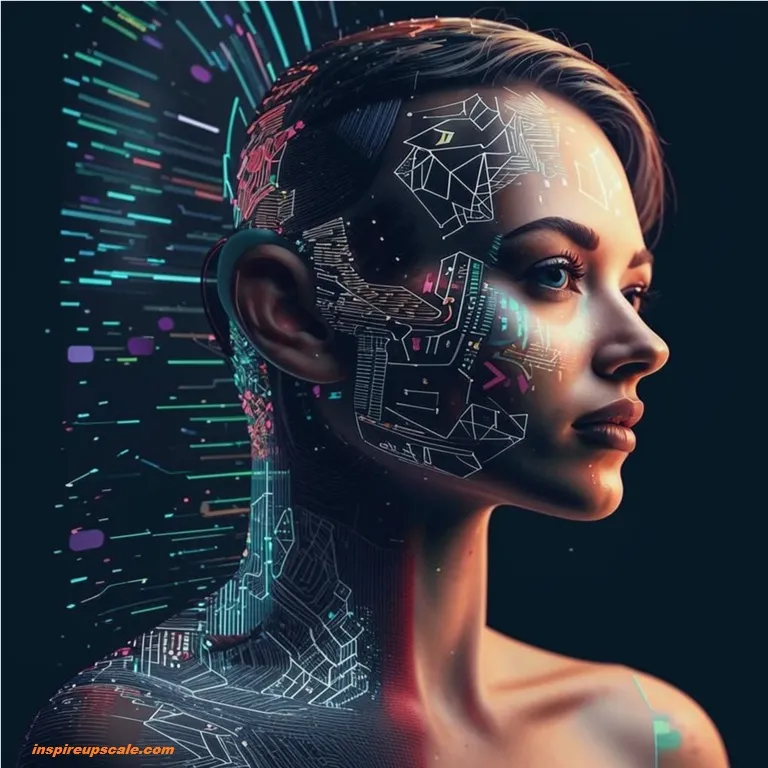


3 thoughts on “Generative AI: 10 Tips On The Future of Astonishing Creativity and Innovation”
Loved the Article
This article is very helpful and insightful!
This article provides a comprehensive and informative overview of Generative AI. I appreciate the insights.